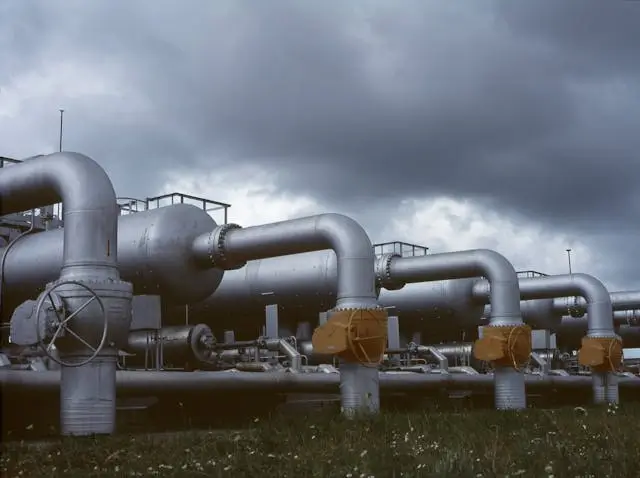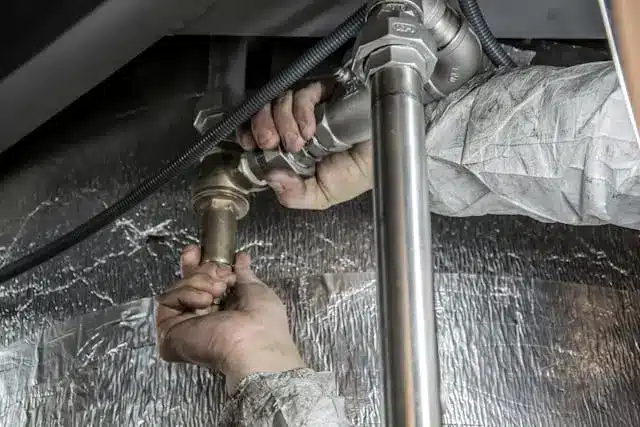Valves are essential components in civil engineering projects, with functions ranging from regulating water flow in dams and canals to controlling gas and oil in pipelines. With the inevitable aging and expansion of infrastructure, engineers frequently encounter challenges related to valve performance and reliability.
Fortunately, advancements in valve technology offer innovative solutions to these issues, paving the way for improvements in civil engineering practices.
Controlling Water Flow
In structures like canals and dams, maintaining optimal water levels is vital for their proper functioning. However, the buildup of sediment and debris poses a significant challenge, as it can impede the operation of valves that regulate flow.
Here are two advanced valve solutions that address these challenges:
Resilient Wedge Gate Valves:
These valves are designed with flexible gates that can withstand sediment and debris buildup. Their wedge-shaped design allows the valve to create a tight seal, enabling precise control over water flow. In a dam, such control is crucial in managing water levels during different seasons or in response to rainfall.
Automated Smart Valves:
These valves are self-regulating, meaning they adjust to changing conditions on their own. This ensures consistent water volumes without the need for manual oversight. In a canal system, these smart valves automatically adjust the water flow based on factors like canal usage, weather conditions, and water source levels. This prevents dangerous overflows and avoids unnecessary waste of water resources.
By incorporating advanced valve solutions like Asco valves, civil engineers can effectively manage and control water flow in various infrastructures.
Regulating Pipeline Pressure
Just as controlling water flow is essential for the efficient operation of dams and canals, ensuring stable pressure in gas and oil pipelines is equally important. Excessive or fluctuating pressure can lead to various risks, such as infrastructure damage, supply interruption, and increased safety hazards.
Consider these solutions for regulating pipeline pressure:
Specialized Control Valves:
These are specialized valves known as regulators. They play a critical role in minimizing pressure-related issues by maintaining preset pressure parameters. In a gas pipeline, these regulators ensure that the gas flow remains within safe pressure limits, thereby preventing potential damage to the pipeline infrastructure.
Digital Intelligence In Valve Regulators:
The integration of digital intelligence into valve regulators enables remote monitoring of the pipelines. Pipeline managers can view real-time pressure data, allowing them to react quickly to any abnormalities. This quick response can prevent these issues from escalating or causing shutdowns. For example, if the pressure data indicates a sudden spike, the managers can take immediate corrective action.
Preserving Pipeline Integrity
The right valves are also integral in combating a persistent threat to pipeline systems—corrosion. It can lead to leaks, ruptures, and other hazardous failures, compromising pipeline integrity. However, the use of specialized, corrosion-resistant valves can help reduce these risks.
The benefits of using these valves include:
Durability:
Ball valves made of corrosion-resistant alloys, such as duplex or super duplex stainless steel, provide durability for saltwater, chemical transport, and other demanding applications. These materials are designed to withstand harsh conditions, reducing the risk of leaks and ruptures.
Corrosion Resistance:
Resilient seated gate valves resist corrosion with protective vulcanized coats and bonnet gaskets. These features help maintain the integrity of the pipelines by preventing corrosion damage.
Longer Asset Lifetimes:
Installing corrosion-resistant valves rather than standard carbon steel varieties can prolong asset lifetimes by preventing corrosion damage. It reduces the risks and disruptions associated with frequent valve replacements, resulting in significant cost savings for civil projects.
Safety and Environmental Benefits:
Using corrosion-resistant valves helps maintain the safety and environmental integrity of pipeline systems. By preventing leaks and ruptures, these valves contribute to safer and more environmentally friendly projects.
The use of corrosion-resistant ball valves is a practical and effective strategy for preventing corrosion damage, thereby enhancing the safety, efficiency, and longevity of infrastructure.
Easing Maintenance Burdens
In civil engineering, accessing buried valves for repair or inspection is often challenging and disruptive due to the need for excavation. However, the introduction of subsurface ball valves has significantly changed this.
Here are the distinct features of these valves:
Clean Installation:
Subsurface ball valves are designed to be installed cleanly inside pipelines. This eliminates the need for disruptive excavation.
Full-Bore Design: The unique design of these valves ensures unobstructed flow within the pipeline. This is crucial in maintaining the efficiency of the system, whether it’s a water supply line or a gas pipeline.
Integrated Gearboxes and Actuators:
These components allow for aboveground control of the valves, further simplifying the maintenance process. For instance, in a water supply system, these features allow maintenance crews to control the water flow without having to dig up the pipeline.
These advancements in valve technology make maintenance tasks more manageable while enhancing the overall efficiency and adaptability of infrastructure.
Conclusion
The field of civil engineering is continually evolving, and so are the demands placed on its infrastructure. Valve innovations, with their smart designs and digital integration, are rising to meet these challenges by providing tailored solutions for pipeline systems.
As this infrastructure expands and ages, the importance of advanced valve technologies in ensuring reliability becomes increasingly evident. They address a range of challenges, from pressure fluctuations and sediment buildup to maintenance access.
The adoption of these modern valve solutions leads to safer operations and reduces operational costs. This progress marks a promising step forward in infrastructure development and management.

